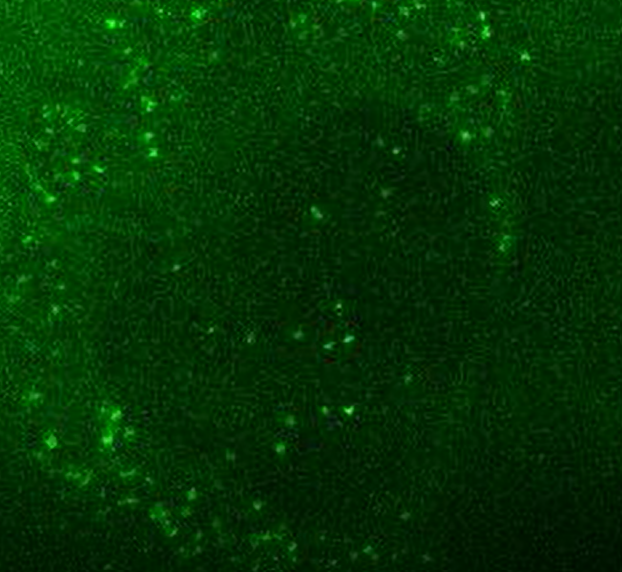In times of a pandemic, there is not a day that goes by without news about viruses. Still, the newest paper from the lab of Oncode Investigator Marvin Tanenbaum, performed in collaboration with the group of Frank van Kuppeveld (University Utrecht), is something special.
Based on SunTag technology, they have developed a way to visualize viral infection by plus strand RNA viruses on a single molecule resolution. The technology termed ‘virus infection real-time imaging (VIRIM)’ allows studying the first few hours after a virus infects a cell. These first few hours were difficult to study, as most analytical methods available require more time to pass in order to obtain sufficient signal for analysis. The single molecule approach bypasses this requirement and also allows taking heterogeneity between cells into the equation.
In the manuscript, with PhD student Sanne Boersma as first author, the team uses a specific strain of picorna virus containing multiple SunTags. This system allowed the identification of 5 distinct phases in viral infection. A key step is the replication of viral RNA, this is a bottleneck for viruses to become successful and presents a major target for antiviral therapy. While it may be too late in the game to combat SARS-CoV-2, the tools developed in this study will be of great value to identify vulnerabilities RNA+ viruses. After all, Zika, hepatitis-C and dengue all belong to this class.

Improving cancer treatments?
But there is more. Next to the implications for combating infectious diseases, the technology described above has the possibility to be exploited to study a viral approach to combat cancer. Viruses have the capacity to invade and kill host cells in a rather specific way. For several years, research across the globe has focused on exploiting these features to combat cancer, but it proves to be difficult.
Using oncolytic viruses, tumour cells can be specifically targeted for destruction. There is however a fine line to be walked here, it is a true balancing act. When a virus is so aggressive to kill the tumour cell it infects, there will less time for the infected cell to sense the viral RNA and activate its cellular immune system. This cellular immune response kickstarts the response of specialized immune cells, which are important to combat the primary tumor as well as metastases. When an oncolytic virus is however to slow and benign, it does activate the cellular immune system, but it does not effectively kill the tumour cells anymore. The VIRIM technology creates new avenues to study this process and to get this balance right. The high temporal and spatial resolution can give a boost to finding the optimal window of opportunity for oncolytic viruses.
This study exemplifies the way we look at the power of basic science within Oncode. It all starts with a basic scientific question: how does viral infection and replication works? Based on the answers from this study, we may find new ways to combat both infectious diseases and cancer.
You can read more about this finding and see what it looks like at the NOS (in Dutch).